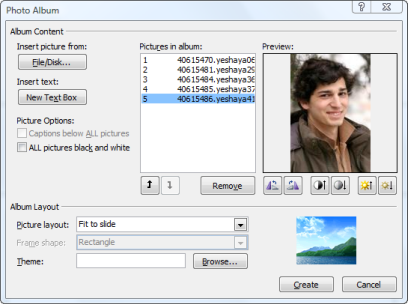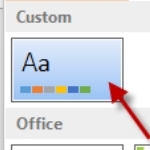By Ellen Finkelstein
Many people need to protect PowerPoint files from changes. There are several reasons for this:
You can choose from a number of techniques, depending on your situation. Sometimes, you need to maintain animation for example; other times, you just need static slides. Here are some methods you can use.
Convert to images
If you don’t have animation, you can convert the entire presentation to images, so that each slide contains an image of the original slide. Of course, people could still remove slides or images, but this method is easy and is often used for review and maintaining creative ownership. It also allows you to protect some slides and not others. This is useful if you want to allow people to change some of the slides. Follow these steps:

click Every Slide

dialog box that tells you were the image files were saved

the Photo Album dialog box
PowerPoint 2010 makes this easier. Choose File> Save As. In the Save As dialog box, click the Save as Type drop-down list and choose PowerPoint Picture Presentation (*.pptx). That’s all there is to it!
Convert to PDF
Another commonly-used method is to convert the presentation to PDF format. You lose all animation, but people can’t change any of the slides, or even delete any. Some options:
Article continued here
This excerpt is shared with permission from ellenfinkelstein.com.




